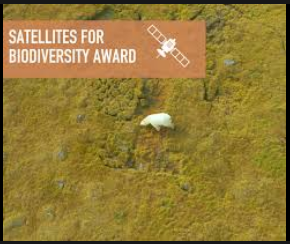- The second edition of the “Satellites for Biodiversity Award” has been announced by the Airbus Foundation and the Connected Conservation Foundation.
- The two organizations are accepting applications until Dec. 15 for an award to support the use of high-resolution satellites for monitoring, tracking and protecting global biodiversity.
- Winners will receive access to Airbus’s high-resolution Pléiades and Pléiades Neo satellites, along with access to global mapping software from Esri and funding of $6,000.
- Previous winners include a project to map elephant habitats in Sai Yok National Park in Thailand, and community-led efforts to use drones and satellites to save tree kangaroos in Papua New Guinea.
The Airbus Foundation and the Connected Conservation Foundation have announced the second edition of their “Satellites for Biodiversity Award.”
Aiming to encourage the use of high-resolution satellite imagery for biodiversity conservation purposes, the call for applications opened earlier this month. Individual researchers as well as nonprofit organizations have until Dec. 15 to send in their proposals. Three winning projects will be granted access to Airbus’s Pléiades and Pléiades Neo satellites, the former delivering images with a resolution of 50 centimeters (20 inches) and the latter delivering an even finer resolution of 30 cm (12 in). The winning teams will also be awarded funding of $6,000 each and free access to global mapping and spatial analysis software from Esri.
“The provision of invaluable data to our winners, coupled with the open exchange of insights and knowledge, aims to cultivate heightened efficacy and progress in use of these techniques for conservation initiatives,” Sophie Maxwell, executive director of Connected Conservation Foundation, said in a joint press release issued by the two foundations.

The award, launched in December 2022, aims to encourage the adoption and use of very high-resolution satellite imagery for monitoring, tracking and protecting global biodiversity. According to the press release, the two foundations are advocating for better use of satellites to monitor the global loss of wildlife, speed up habitat preservation, and support worldwide initiatives to tackle and slow down the sixth mass extinction.
The Connected Conservation Foundation is a U.K.-based nonprofit that works with local communities to encourage the use of technology in wildlife conservation. Last year, the organization teamed up with the Airbus Foundation, the philanthropic arm of the European aerospace company, to launch the “Satellites for Biodiversity Award.”
Previous winners include conservation projects in Africa, Asia and Oceania. In Thailand’s Sai Yok National Park, Airbus satellites have been used to map the habitats of the dwindling elephant population there. The Tree Kangaroo Conservation Program, another winner from last year, was recognized for its efforts in using drones and satellite imagery to drive community-led initiatives to protect endangered Matschie’s tree kangaroos (Dendrolagus matschiei) in Papua New Guinea.
The application form for the second edition of the award can be found here.




